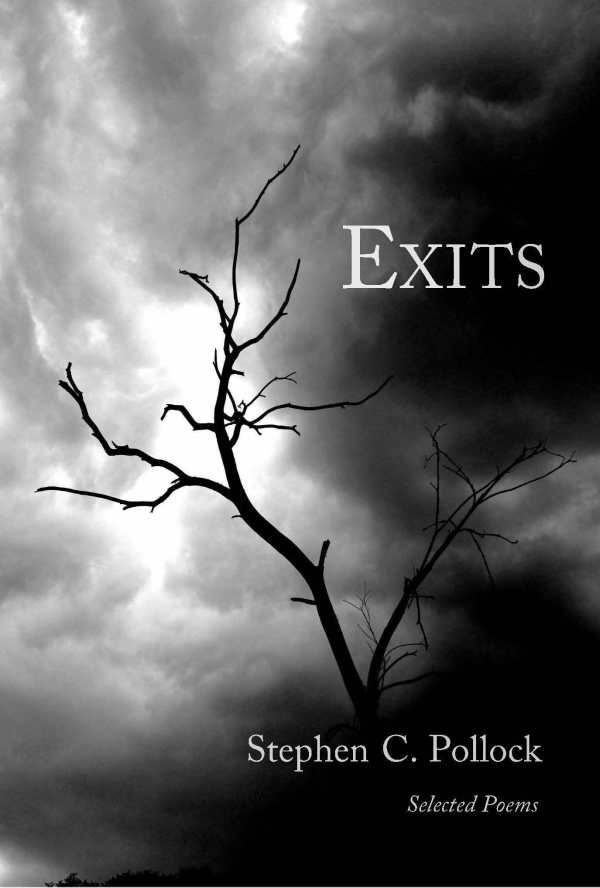Exits
Selected Poems
Dedicated to the beauty and frailty of life, the poetry collection Exits exemplifies the musicality of language.
Featuring delicate images, Stephen C. Pollock’s slim, mellifluous, and metered poetry collection Exits considers nature in cyclical decay.
The book keeps its formal concerns tight, opening with the alliterative entry “Arachnidæa: Line Drawings” and the fine art of a spider’s web, with the spider at its center regarded as “a brooch with a clasp.” The image darkens: the web conceals death at every turn, “paper mâché sarcophagi, / cruel chrysalis for moth or butterfly.” Though the poem begins with the spider centered as a killer, by its end, the spider too falls victim to time, waiting at the center of the web for what is inevitable. The entry is representative of the volume’s general fascination with nature and the kind of close looking that reveals more than beauty. Here, a rose does not survive without its thorns.
Poems like the elegiac “Leaves” and the dark but humorous “Dung Beetles” attend to the subject of decay and its inevitability. Sonnets are used to wrestle with the devastating realities of modernity, chief of among them climate change. The subjects range from the loss of local butterflies after pesticides are sprayed to the impact of zombie fires “north of the boreal forests,” where “the arctic burned.” Elegant lines and subtle rhymes lead to sonic triumphs, and there’s tension between entries’ musical perfection and subjects like the collapse of the environment.
Musicality, often via rhyming, typifies the poems, as do references to Greek myths that intertwine classical elements with contemporary ones. In “Syringe,” the speaker struggles with his own illness, moving from an association with the syringe to the metamorphosis of Syrinx, who turned from water nymph into hollow reeds. Indeed, a narrative thread is suggested as the volume progresses: “Nasal Biopsy” expresses fear over a potentially negative diagnosis that may represent a test of faith; in “Spine of Dorian Gray,” illness and aging take on new urgency due to the progression of an illness. These themes are not adhered to in a strict manner, but the poems that address them still center the book; its other poems orbit around understandings of life and mortality.
Each entry in the book is coupled with an image, often without need. The images include photographs, paintings, sculptures, and simple drawings; they pull from a variety of time periods too. “Tube” is accompanied by a jaunty pen-and-ink drawing by P. S. Art Design Studio, Tube of Toothpaste, which does not complement the poem’s addresses of aging and depletion. “Spine of Dorian Gray” is paired with an image from Leonardo da Vinci’s journal, a schema of the spine with copious notes; it does a better job of enlarging the images in the poem.
Exits is an aching poetry folio that follows the cycle of life, including the stagger of long illness, the friendship of art and literature, and the outlet of language.
Reviewed by
Camille-Yvette Welsch
Disclosure: This article is not an endorsement, but a review. The publisher of this book provided free copies of the book and paid a small fee to have their book reviewed by a professional reviewer. Foreword Reviews and Clarion Reviews make no guarantee that the publisher will receive a positive review. Foreword Magazine, Inc. is disclosing this in accordance with the Federal Trade Commission’s 16 CFR, Part 255.

